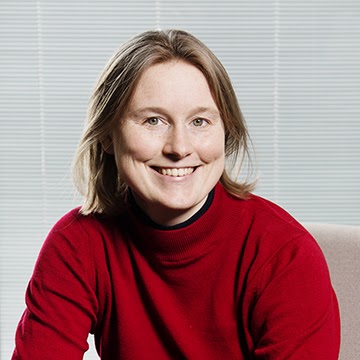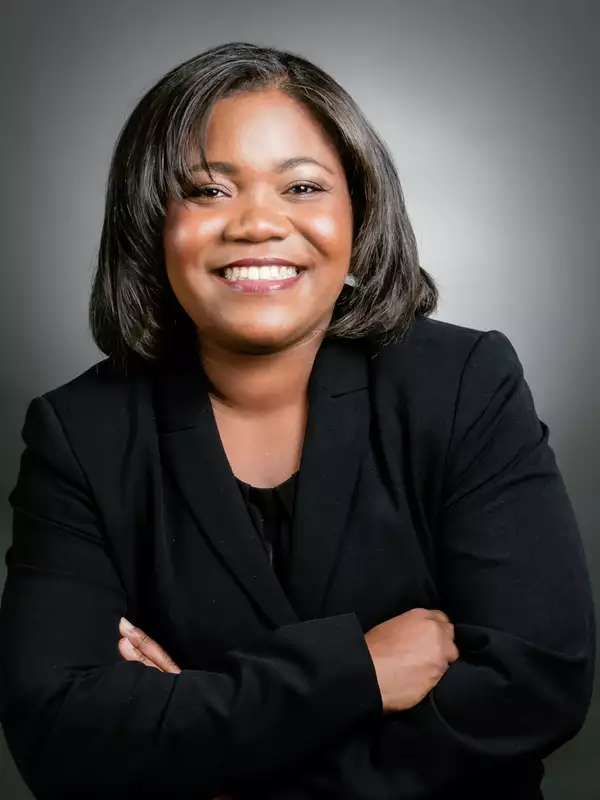Technology is constantly evolving, and for many in the STEM field, using applied science to improve people’s health and well-being is a top priority, especially in the midst of the COVID-19 pandemic. Cecily Morrison ’02, who majored in ethnomusicology at Barnard and holds a Ph.D. in computer science from the University of Cambridge, is at the forefront of the movement to create life-changing technology specifically by using novel computer technology to transform accessibility for disabled people.
As a principal researcher for Microsoft’s Future of Work community, Morrison focuses on how cutting-edge forms of artificial intelligence and human-computer interaction can be utilized to support the visually impaired and blind. Morrison’s current projects include Project Tokyo, which aims to create visual agent technologies for people who are blind or low vision, and Project Torino, which created a physical programming language called Code Jumper to support children with visual impairments.
On December 2-3, Morrison will speak at the virtual Sight Tech Global conference to present her research and delve further into how technology is shaping the future of accessibility for those who are vision impaired or blind.
In anticipation of her Sight Tech Global talk, this “5 Questions With …” asks Morrison to reflect on diversity in technology, how she came to work in STEM, and what she would tell her Barnard self.
How can our current technology be used to support accessibility for visually impaired and blind people, and how is your research helping to expand the technology?
There are many types of technologies that enable access. A growing area is using computer vision algorithms, or AI, to relay visual information, [such as being able to] read text or recognize people who are not talking. Most of the applications in this area are focused on a static image — for example, what is in a tin? This requires processing an image and making a single judgment. However, life is dynamic and happens over time. To participate in complex interactions, such as social ones, information needs to be ongoing and spatial. The team I work with, Project Tokyo, is focused on creating visual agent technology that provides continuous information through spatial sound of people in the vicinity.
Why did you decide to focus on artificial intelligence-related technology for your research?
I have always started my research questions with people rather than technology. I am always looking for where the intersection of human need and opportunity meets the potential of novel technologies. In my career at Microsoft Research, much of that overlap has come with new techniques in machine learning. I am particularly excited about the opportunities of low-shot learning to learn directly from a single user’s data. See the ORBIT project as an example.
What led you to research AI and inclusive design technologies for people who are blind or visually impaired?
People who are blind and low vision were early adopters of agent technologies — for example, Siri and Cortana. When we wanted to develop visual agents, they were a natural group to turn to that could help us imagine a future world with visual agents. I have also found that my participation in this community, by having a blind child, has helped me better understand the nuance of how AI technologies might be used to empower rather than disempower. We want to build technologies that extend people’s capabilities rather than replace their often highly tuned skills and strategies.
I believe strongly that the diversity of the people who innovate new technological experiences will have a profound impact on what our future with technology looks like. I deeply encourage more women to get involved in creating our future and for everyone to engage with a wider set of experiences than just the ones that show up at your front door. It is those experiences that often bring us the insights we need to innovate.
In this podcast, you discuss the “pillars” of inclusive technological design. What are they?
There are three pillars of inclusive design: 1) recognize exclusion; 2) design for diversity; and 3) design for one and extend to many.
The first pillar takes the perspective that disability is not something inherent in the body or mind but comes from a mismatch between a person’s physical and mental capabilities and the environment that they are in. Changes to the environment or technologies can minimize that mismatch. That means every decision that we make as technologists is a choice to include or exclude. Seen in that way, it is obvious that we should include. For example, appliances have all moved to digital displays, making it difficult for people who are blind, older people, and people with mobility impairments to do their laundry. The right perspective and a day of thoughtful design could have easily created a product that worked for all of those populations.
The second pillar brings the idea that thinking about edge cases can help us innovate new ideas. We often get stuck in our unconscious bias about how the world works. As a result, innovations can be steps rather than leaps. If we focus on people with different ways of being in the world, that can help us imagine solutions that we would not otherwise have thought about. My work on Code Jumper, a physical programming language for teaching basic coding to children ages 7–11, regardless of their level of vision, is an excellent example of inclusive design. As researchers, we immediately thought to translate blocks on a screen to blocks on a table. Our young design team of blind tactile experts showed us that we needed something that fit nicely in the hand, that could be picked up, and was responsive to touch. We ended up with live beads on a string rather than blocks on a table.
The third is to design for one and extend to many. If we design technology to be used by a person with one hand (permanent disability), we can then extend that to people who have a broken arm (temporary disability) or just have their hands full of a baby (situational disability). In this way, designing for a small group of people can focus the design that can apply to a much larger group. It is important to remember when doing this that we should be focused on inclusive use, not exclusive use. For example, putting braille on a tactile interface substantially increases the number of people who might benefit from that technology. More information can be found in the Microsoft Inclusive Design Toolkit.
If you could go back in time and tell your Barnard self one thing, what would it be?
I was determined to have a career in the arts. I now have a career in technology. Careers are rarely planned, but what you bring to the table in whatever you do is your perspective and life experience. I think I would have put more focus on expanding my life experience and understanding others — being less planful about a future and more thoughtful about how I developed myself.
One of your hobbies is playing the bagpipes. How did you get started?
My parents took me to a Highland Games, a celebration of Scottish culture, and I fell in love with the music and the dancing. Indeed, I’ve found that traditional culture is a great way to share interactions with people in places across the globe.
— SOLBY LIM ’22


